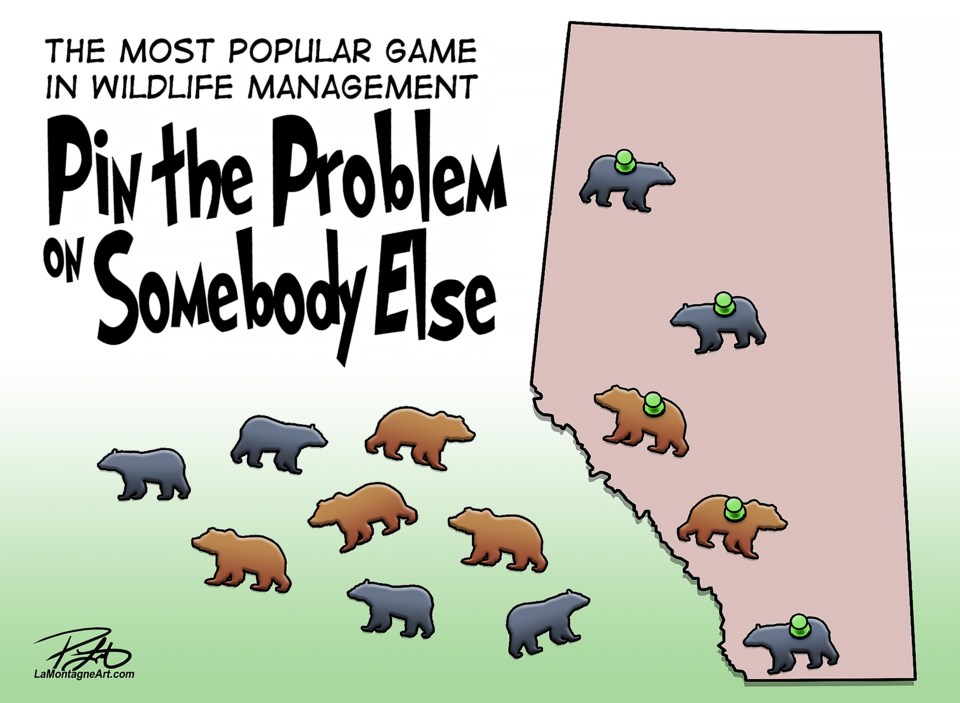The recent killing of a mamma black bear and two cubs have once again shined a light on the role humans have in preventing human-wildlife conflicts.
The Bow Valley has long prided itself on limiting human-wildlife conflicts and for good reason. There are numerous organizations and individuals advocating each day for ways to better co-exist with one another.
But while it’s one thing to celebrate a strength, it hardly means we can’t do better.
The three black bears who were killed for public safety reasons were feeding in a downtown Canmore dumpster belonging to a business for several nights, highlighting that it doesn’t take much to entice a bear to take advantage of a free meal.
The region’s progressiveness on wildlife-proof garbage bins is a positive, especially as many other areas have sorely lacked behind.
However, a walk in many populated areas of region will quickly show that commercial bins are at times left open, have doors that are broken and no longer fully close.
It’s an open invitation for a bear getting ready for months of hibernation.
But where does the fault lie?
It would be easy to point a finger at one person, tell them to get their act together and pat ourselves on the back for a job well done after quickly solving the problem.
As with most things in life, it’s never that simple. It takes everyone to make an impact.
However, a hope in others to take the onus is unfortunately all too common. The federal government doesn’t pay attention, the province shirks from responsibility, a municipality throws up its arms and blames the province, a business says it’s too expensive and an individual says it’s not their problem.
By all groups working in their own silos, it can lead to bears getting shipped out, which ultimately raises another issue and is similar to delivering a death sentence.
While relocating bears may seem like a new beginning for the bruins to some, it’s largely hoping for the best.
The chances of a relocated bear surviving the move is low, with only one-third of grizzly bear translocations being successful, according to a 2018 Alberta study.
Former Banff National Park superintendent Kevin Van Tighem called it “fear-based mismanagement” earlier this summer after a young male grizzly was relocated out of Canmore.
The three black bears had already been relocated with another cub and made the 200-kilometre trek back to Canmore in a matter of 14 days.
The dumpster diving led to them not focusing on their natural food supply and losing the caution bears have when near humans.
Some people may call for more strict enforcement and penalties for human offenders, while others will argue relocating bears at least gives them a fighting chance at survival elsewhere.
It’s inevitable that living within nature, there will be human and wildlife interactions in areas such as the Bow Valley and Kananaskis Country.
Every year people bemoan when bears are relocated or killed for public safety reasons.
The public, government bodies and organizations can do something about it to further lessen the impact.
It comes with everyone taking a measure of responsibility.




